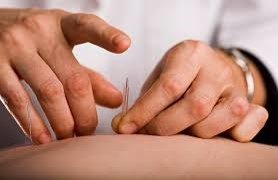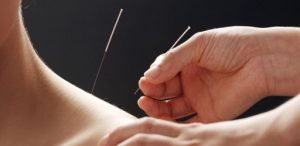



Energy
flows where acupuncture goes
Acupuncture heals by balancing energy within the body. Acupuncture is based on the belief that the balance of the energy flow (Chi) through the meridians of the body is the essence of all living organisms for harmony and optimal health.
Acupuncture has been used for thousand years. Acupuncture started in Asia, but it is now practiced all over the countries like USA, Canada, England, France, Germany, Spain, Israel, South Africa, Australia, Mexico, Brazil, Argentina and so on.
In TCM theory the body’s energy travels in channels called meridians. Each meridian follows a very specific pathway that includes specific organs, tissues, muscles, and bones. Acupuncture is done by inserting very fine, sterilized needle into special points in the meridians which is spread out all over the body like a spider web. If a certain point of the meridians is blocked by any reason like stress or accident, the body is said to have an imbalance and will, sooner or later pain caused in the area. The acupuncture needle opens up the congested meridian in order for the energy to flow freely to relieve the pain as if Highway Patrol patrols the traffics.
To make it more understandable, many scientific studies have shown that inserting needles at these points of meridians may stimulate the nerve system to release natural body chemicals that reduce pain and help recover health. Whether pain is acute or chronic and located in the shoulder, lower back, knee, elbow or anywhere else in the body, acupuncture can provide relief.
While each person experiences acupuncture differently, most people feel only a minimal amount of sensation as the needles are inserted. Once the needles are in most of our patients feel a sense of deep relaxation, and sleepiness.
The main objectives of acupuncture treatment are relieving pain and other symptoms, strengthening the immune system, and balancing, harmonizing and integrating the functions of the internal organs with each other, making for a unified.
A Brief History of Acupuncture
Acupuncture originated in China around 3,500 years ago and remains one of the oldest, most commonly used systems of healing in the world. Chinese medicine is still the primary medical system for 1/4 of the world’s population.
Traditional Chinese Medicine considers Qi (pronounced “chee”) to be our vital energy or life force. Qi flows along pathways or “meridians” which run the length of our limbs and to each of our organs. They form a network that looks a lot like the subway map. Like the subway, the various pathways overlap and are all critical to the network as a whole. TCM believes that there is a deep inter-connectedness between all aspects of our being—both internally and externally.
Health is a state where there is balanced and harmonious flow of Qi throughout our bodies. Conversely, imbalances can lead to many ailments. Acupuncture involves the insertion of hair thin needles at specific points in the body. These points are along the meridians mentioned previously and conduct the Qi. Each of these points act as a gate—controlling the flow of Qi on the specific meridian along with their corresponding organs. The insertion of needles allow the Qi to flow properly through the meridians.
Chinese herbs are also employed to maintain health, prevent illness, and restore vitality to the body. Herbal formulas are crafted to balance and harmonize the body from within—to strengthen us when we are weak, warm us when we are cold, calm us when we’re overactive, get us moving when we are sluggish, etc. The herbal formula that you may receive, like the acupuncture, is designed specifically for you based on your individual medical history and case!
Here is the answers to some common questions about acupuncture:
WHAT IS ACUPUNCTURE?
- FINE NEEDLE INSERTION INTO MERIDIAN POINTS TO REBALANCE BODY DISHARMONY
- AFFECTS THE QI(CHI) AND BLOOD CIRCULATION
- REDUCE WHAT IS EXCESSIVE
- INCREASE WHAT IS DEFICIENT
- WARM WHAT IS COLD
- COOL WHAT IS HOT
- CIRCULATE WHAT IS STAGNANT
- MOVE WHAT IS CONGEALED
- STABALIZE WHAT IS WRECKLESS
- RAISE WHAT IS FALLING
- LOWER WHAT IS RISING
DOES ACUPUNCTURE WORK?
Worldwide, more people have been successfully treated with acupuncture than with all other systems combined.
With research backing its efficacy, acupuncture is widely practiced in Asia, Soviet Union, and Europe. It has been used in the United States since 1970’s.
Acupuncture treatments can be given in conjunction with other therapies such as conventional Western medicine, physical therapy, chemotherapy, psychotherapy etc.
HOW DOES ACUPUNCTURE WORK?
The efficacy of acupuncture has prompted tremendous research world wide including the United States. The more common explanations of its course of action are mentioned below.
Eastern perspective:
The theory of acupuncture is based on the patterns of Qi (energy) flow through the body. During normal state of health, energy travels smoothly through a network of meridians in the body. Disruption in this normal Qi flow is responsible for occurrence of disease.
Acupuncture corrects these imbalances by releasing energy blocks and re-establishing normal Qi circulation, thus stimulating the body’s natural ability to heal itself.
Western perspective:
The modern scientific explanation is that needling the acupuncture points stimulates the nervous system to release hormones, endorphins and other chemicals in the muscles, blood stream, spinal cord, and brain. These chemicals can change the experience of pain. They also stimulate the body’s natural healing ability, promoting physical and emotional well-being.
Therefore acupuncture treatments are done for a few weeks, once they stimulate an adequate response in the body, the treatments are weaned off.
IS ACUPUNCTURE SAFE & EFFECTIVE?
National and International health organizations as well as modern research agree that acupuncture is a safe and highly effective treatment modality for many conditions. Acupuncture needles are FDA-approved, sterile, disposable and made of solid steel.
The National Institute Of Health (NIH) published the following data after the 1997 NIH Consensus Development Conference. The statement in its entirety can be viewed online at consensus.nih.gov/1997/1997Acupuncture107pdf.
“The data in support of acupuncture are as strong as those for many accepted Western medical therapies”
“One of the advantages of acupuncture is that the incidence of adverse effects is substantially lower than that of many drugs or other accepted medical procedures used for the same conditions”
“Both animal and human laboratory and clinical experience suggest that the majority of subjects respond to acupuncture, with a minority not responding”
“There exist a number of studies of sufficient quality to assess the efficacy of acupuncture”
“The occurrence of adverse events in the practice of acupuncture has been documented to be extremely low”
DOES ACUPUNCTURE HURT?
 The sensation of acupuncture can feel like a tingling, pulling or a dull aching, heaviness, heat or movement in the area of needle insertion. This is one of the signs the body's energy has been stimulated.
The sensation of acupuncture can feel like a tingling, pulling or a dull aching, heaviness, heat or movement in the area of needle insertion. This is one of the signs the body's energy has been stimulated.
Most patients find the process very restful and relaxing; many even fall asleep during the treatment.
Please just try to relax and "let go" of your ailment and imagine it leaving your body.
IS ACUPUNCTURE COVERED BY INSURANCE?
Yes, we accept most insurance providers. Below is a comprehensive listing of insurance plans we currently accept.
While we may accept many insurance providers, some of their plans may not cover all services. If you see your insurance listed below it’s best to contact your insurance to confirm which services your plan covers. In the case your plan is not listed, call us to verify that your insurance is accepted by us.
Let us verify your insurance coverage for you. Please send us an email with a picture of your insurance card (both sides) and ID(s).
HOW MANY TREATMENTS DO I NEED?
It depends on your individual condition. At first we normally ask to see you once or twice a week. Once your health has stabilized you may need top-up treatments every few weeks.
Most patients see a significant relief in about 6 to 10 treatments.
Acute problems usually require fewer treatments.
Chronic and complex conditions may require more treatments.
Once there is significant symptomatic relief, if maintenance treatments are done every 4 to 12 weeks, the results are longer lasting.
Please feel free to call us to discuss your concerns and a possible plan of treatment.
WHAT CAN I EXPECT BEFORE AND AFTER A TREATMENT?
Acupuncture treatments bring about changes in the body, which continue for a few hours after the treatment.
In order to receive optimal results, it is important to avoid physical or mental exertion immediately before and after the treatment.
It is important to eat a light snack before the treatment.
WHAT CONDITIONS DO WE TREAT?
Acupuncture has been effective in treating a variety of conditions. This is a list of the more common conditions treated with acupuncture.
- Pain including back, neck, shoulder, arthritis and other
- Cosmetic/Facial Rejuvenation
- Bell palsy
- Fibromyalgia
- Headache and Migraine
- Infertility
- Seasonal Allergies
- Stress/Anxiety/Depression
- Side Effects of Cancer Treatment
Other conditions we treat with Acupuncture:
Respiratory Disorders
|
Ear Disorders
|
Disorders of the Mouth
|
Gastro-intestinal Disorders
|
Neurological disorders
|
Musculo-skeletal disorders
|
Reproductive System Disorders
|
Mental- Emotional Disorders
|
In 2003, the World Health Organization(WHO) published a review and analysis of controlled clinical trials on acupuncture. They listed the following as "Diseases, symptoms or conditions for adverse reactions to radiotherapy and /or chemotherapy
- Allergic rhinitis (including hay fever)
- Biliary colic
- Depression (including depressive neurosis and depression following stroke)
- Dysentery, acute bacillary
- Dysmenorrhoea, primary
- Epigastralgia, acute (in peptic ulcer, acute and chronic gastritis, and gastrospasm)
- Facial pain (including craniomandibular disorders)
- Headache
- Hypertension, essential
- Hypotension, primary
- Induction of labour
- Knee pain
- Leukopenia
- Low back pain
- Malposition of fetus, correction of
- Morning sickness
- Nausea and vomiting
- Neck pain
- Pain in dentistry (including dental pain and temporomandibular dysfunction)
- Periarthritis of shoulder
The WHO, the National Center for Complementary and Alternative Medicine(NCCAM) of the National Institutes of Health(NIH), the American Medical Association(AMA) and various government reports have studied and commented on the efficacy of acupuncture.
